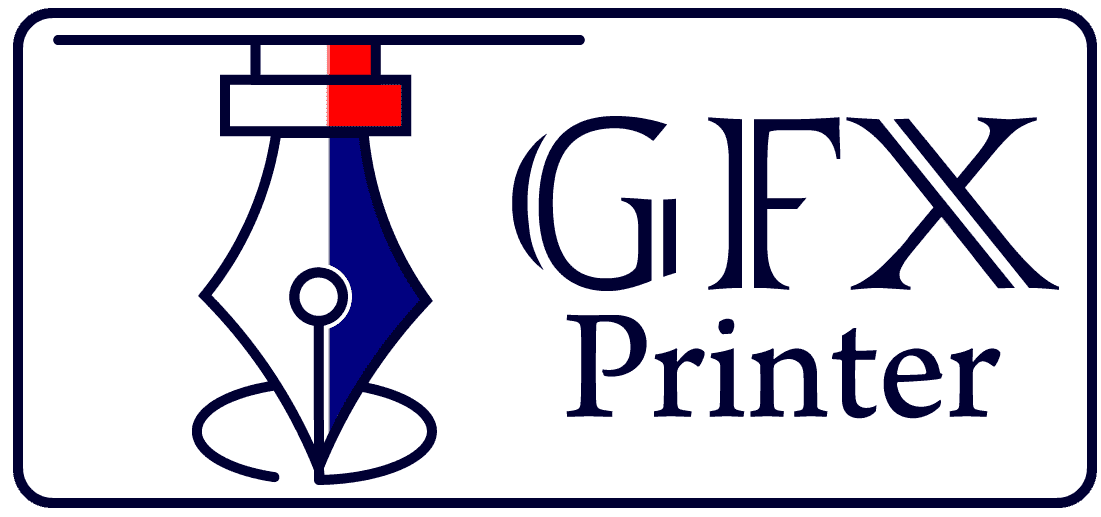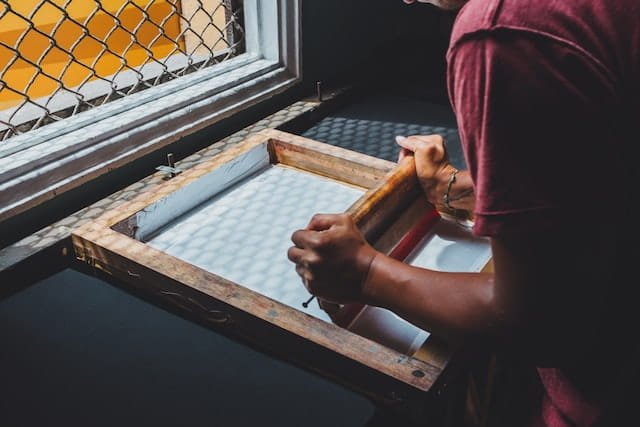Are you curious about digital printing & doubtful of what it is and how it works? In this blog, we’ll discuss the concept of digital printing and its many applications or steps in the Digital Printing Process. From invitations to artwork and photography, digital printing can use to create beautiful printed products in no time. Plus, with the right gear and knowledge about how you can even do digital printing yourself! Read on to learn more about this amazing technology.
Introduction of Digital Printing
As the name proposes, this is a method of printing from a digital file directly onto a kind of media. It’s the latest technology in the printing industry and offers some major advantages over traditional print methods.
Digital printing has changed the way we print documents and images. In the past, if you want to print something, you would first need to create a physical template or negative that can use to produce your prints. With digital printing, there is no need for a physical template – everything is over digitally. Which makes the entire process much easier and faster.
Additionally, digital printing allows for model and variable data printing, meaning you can create custom prints with different images or text on each one. This is perfect for businesses that want to print marketing materials like postcards or flyers with personal messages for each customer. Overall, digital printing provides a profitable and able solution for all your print needs.
What is Digital Printing?
Digital printing is a process that allows you to print digital images directly onto a variety of media. This type of printing is ideal for short runs, or when you need to print on a variety of substrates. A wide range of ink-jet and toner-based printers use in this process. These printers can print on a variety of substrates, including paper, card stock, labels, and more.
One of the main advantages is its versatility. You can use it to print anything from photos and artwork to marketing materials and business cards.
Digital printing also has a few disadvantages. One is that it’s generally more expensive than traditional offset printing. Another is that it can be less accurate, so if you require razor-sharp prints, digital may not be the best option.
Advantages and Disadvantages of Digital Printing
Digital printing has a lot of advantages over traditional printing methods. Perhaps the biggest advantage is that it is much more efficient and can cover on a shorter timeline. With digital printing, there is no need for plates or screens, which makes the process faster and easier.
Another big advantage of digital printing is that it offers more flexibility when it comes to design. With traditional printing, you are little by the number of colors that can use, and the overall design has to be fairly simple. However, you can use as many colors as you want and get really creative with your designs.
Finally, digital printing is usually more affordable than traditional printing methods. This is because there are no set-up costs complex and it is generally a simpler process. Of course, there are also some disadvantages to digital printing. One of the biggest disadvantages is that it can sometimes produce prints that are of lower quality than traditional methods. This is because digital printers are not always able to print at a high enough resolution to produce really crisp images. Additionally, digital prints can sometimes fade over time if they can not correctly protect or store.
Steps for Digital Printing Process
Assuming you already have a design ready to go, here are the steps for digital printing:
- Prepare your file for print. This means making sure it is the correct size, resolution, and format.
- Send your file to the printer. You can do this online or via email.
- The printer will print out a proof for you to check. Make sure everything looks good before approving it for print.
- Once you approve the proof, the printer will start the job. Depending on the size of your order, it may take a few hours or days to complete.
- Once the job is over, the prints will ship to you or be available for pick-up.
Different Types of Digital Printing Technologies
Digital printing is a process that allows you to print digitally-created files directly onto a variety of substrates. Unlike traditional offset printing, which uses plates to transfer ink onto paper, digital printing bypasses this step entirely.
There are several types of digital printing technologies available, each with its own advantages and disadvantages. The most common are ink-jet and laser printers, but more specialized options like thermal transfer and dye sublimation printers are also available.
Ink-jet printers use small jets of ink to deposit color onto the page. They’re typically the most affordable option for home and small office users, and they can produce high-quality prints. However, not well claimed for large-scale jobs, as the ink can take a long time to dry.
Laser printers use a laser beam to draw the image onto the drum before transferring it to paper. They’re faster than ink-jet printers and can handle larger print jobs, but they tend to be more expensive.
Thermal transfer printers use heat to transfer dye or wax onto the paper. They’re much used for labels and barcodes, as they can produce very precise prints. However, not well suited for photos or other graphics, as the colors can appear muted.
Dye sublimation printers use heat to transfer dye onto special paper or fabric. They produce high-quality prints, but they’re more expensive than other types of digital printers.
How to Choose the Right Technology for Your Need?
When it comes to printing, there are a few factors you’ll need to consider choosing the right technology for your needs. Here are a few things to keep in mind:
What type of project are you working on?
If you’re working on a large-scale project that requires high-quality prints, then you’ll need to invest in a technology that can handle that type of work. On the other hand, if you’re working on a smaller project or something that doesn’t require top-notch quality, then you can probably get by with a less expensive technology.
What is your budget?
Of course, budget is always a consideration when selecting any type of printing technology. It’s important to remember, though, that you usually get what you pay for – so if you want high-quality prints, be ready to spend a bit more money. Conversely, if cost is your primary concern, then you may have to sacrifice some quality to stay within your budget.
What are your specific needs and requirements?
Before making a decision, it’s significant to sit down and really think about what your specific needs and requirements are. For example, do you need high-speed printing? Or do you require features like duplexing or automatic document feeders? Once you know what you require, it will be much.
Tips for Designing a Quality Print Project
When designing a print project, there are steps for Digital Printing Process you can do to ensure that you’ll end up with a beautiful, high-quality final product. First, consider your paper choice carefully. There are a variety of different papers available, each with its own unique properties. Choosing the right paper will make a big difference in the final look and feel of your project.
Next, take care of your design. A well-designed project will be much more likely to turn out to look great when printed. Use high-resolution images and graphics, and be sure to proofread your work before sending it off to print it.
Finally, decide a reputable printing company that can produce high-quality results. Ask for samples of their work before making your final decision, and don’t be afraid to ask questions about their process and capabilities. With a bit of care and attention to detail, you can create a beautiful print project that you’ll be proud of.
Conclusion
Digital printing is a great way to create high-quality prints for business, personal, or marketing needs. It’s more cost-effective and quicker than traditional printing methods and offers an array of options to customize your projects according to your needs. Whether you’re looking for flyers, brochures, posters, or photo books, digital printing helps bring them to life in vibrant detail. Now you know the steps for Digital Printing Process. Give it a try; you may surprise by the results!






